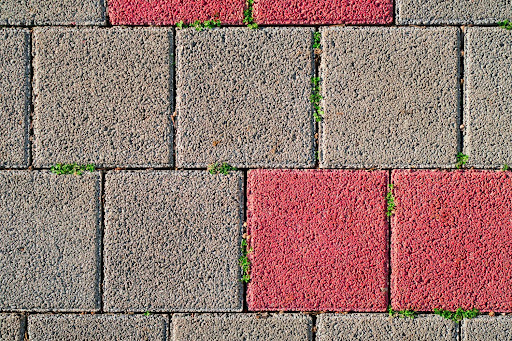Innovations in Concrete: Advancing Aesthetics and Functionality in Retaining Walls

In the changing world of landscaping and construction concrete has always been a choice for retaining walls providing stability and structure to outdoor areas. However the perception of concrete as functional is evolving due to innovations in design and practicality. In this exploration of “Advancements in Concrete ” we will delve into the progress that is shaping the aesthetics and functionality of retaining walls. From cutting edge designs to practices we are witnessing a revolution that goes beyond the ordinary.
The Evolution of Retaining Walls Made with Concrete
From Utility to Design Element
Concrete retaining walls have traditionally been valued primarily for their role in preventing soil erosion and managing slopes. Nevertheless recent innovations are pushing boundaries by transforming these walls into design elements that enhance the beauty of landscapes.
Architectural Versatility
The versatility of concrete allows for creativity. Modern retaining walls are no longer limited to structures: instead they embrace curves, angles and textures that add depth and visual appeal to outdoor spaces.
Sustainable Practices
Incorporating Recycled Materials
Concrete production has embraced the use of recycled content, like crushed aggregates. This helps reduce the demand for materials and lessens the impact of construction projects.
Friendly Concrete
The development of low carbon mixes which utilize alternative binders or supplementary cementitious materials addresses environmental concerns. These mixes aim to reduce the carbon footprint associated with production while maintaining performance standards.
Functionality at the Forefront
Smart Drainage Systems
To address the aspect of retaining walls smart drainage systems have been introduced. These systems can incorporate sensors of detecting water buildup behind the wall thus triggering drainage mechanisms that prevent potential damage.
Smart Lighting Solutions
Concrete retaining walls can now integrate lighting solutions, which enhance both safety and aesthetics. LED lighting systems can be programmed for energy efficiency. Synchronized with smart home features.

Reinforcement Technologies
High-Strength Reinforcement
Advancements in reinforcement technologies have led to the development of high strength reinforcements like fiber reinforced polymers (FRP). These materials boost the strength of concrete making retaining walls more durable and long lasting.
Carbon-Fiber Reinforcement
When it comes to reinforcing concrete carbon fiber reinforcement offers a strong solution. This innovation is particularly useful in areas of activity where reducing weight is crucial.
To reduce the impact of construction projects traditional aggregates used in production are being supplemented or replaced with innovative alternatives. Recycled glass, crushed porcelain and recycled plastic can be incorporated into mixes.
Management of Vegetation
When incorporating vegetation into retaining walls it is crucial to consider maintenance requirements. Strategies for managing plant growth preventing root intrusion and ensuring the walls integrity are vital for long term sustainability.
Real life Examples of Innovative Concrete Retaining Walls
Integration of Green Infrastructure
The High Line, a park built on a railway track showcases seamlessly integrated concrete retaining walls and green infrastructure. These walls serve both aesthetic purposes by blending design with nature harmoniously.
Customized Formwork
The retaining walls along The High Line demonstrate the use of customized formwork to create patterns and textures. This meticulous attention to detail transforms the walls into features within the park’s landscape.
The Eden Project in the United Kingdom
Biomimicry in Concrete Design
The Eden Project, in the United Kingdom exemplifies advancements in biomimicry through its retaining walls. Inspired by nature’s resilience these walls contribute to the project’s sustainability while providing support.
Permeable Surfaces
At The Eden Project we utilize surfaces in specific areas to allow rainwater to pass through. This helps reduce runoff and supports the balance within the biomes.
Future Trends and Possibilities
Advancements in 3D printed concrete technology have opened up opportunities for designs in retaining walls. We can now achieve patterns, complex geometries and personalized elements with utmost precision.

Sustainable Materials in 3D Printing
With the increasing use of 3D printing in construction we can incorporate materials like recycled aggregates or based binders into the mix for 3D printed concrete.
Interactive and Smart Elements
Imagine retaining wall caps that go beyond their function. We envision incorporating elements such as touch surfaces or embedded sensors into future concrete structures. These elements could respond to user interaction. Adapt based on conditions adding functionality and enhancing engagement.
Augmented Reality Integration
By integrating reality applications into retaining walls we can create a captivating blend of functionality and aesthetics. Imagine virtual landscaping previews, educational displays or interactive art installations enhancing the experience of these structures.
Conclusion
The world of retaining walls is currently experiencing a transformation driven by innovative technologies that redefine both their form and function.The shift, from functionality to design has unlocked fresh opportunities for creativity, sustainability and the integration of technology. While concrete remains a component in construction, its ability to adapt and its versatility are now catalysts for innovation.


